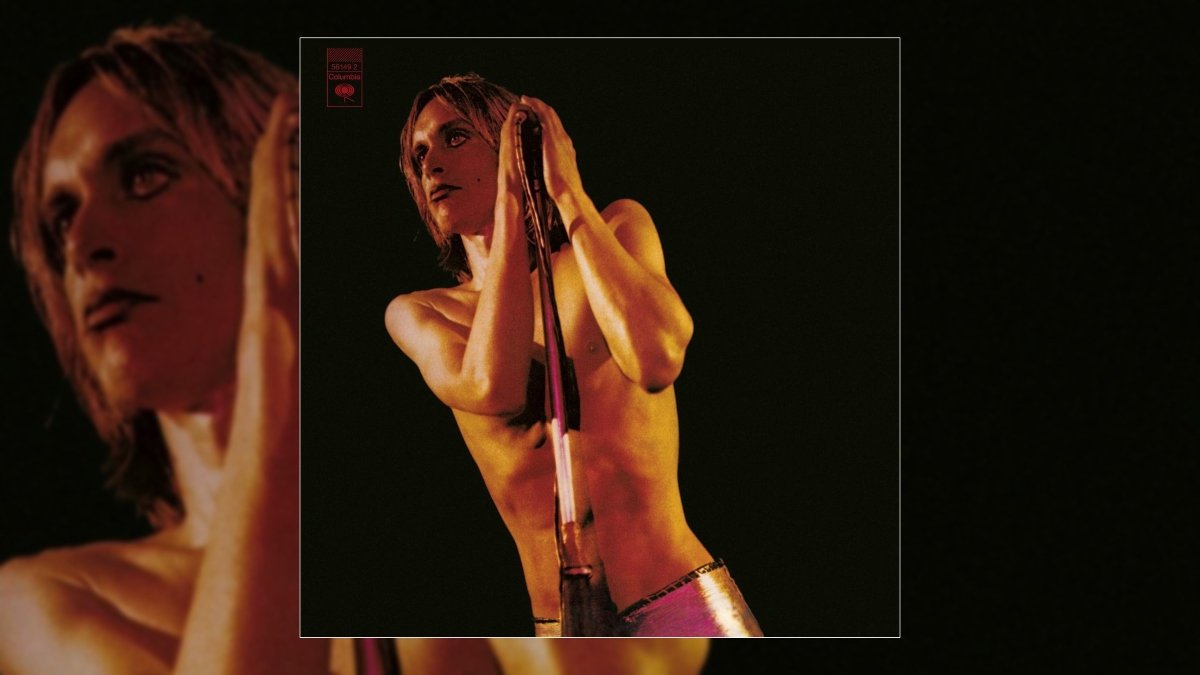Happy 50th Anniversary to Iggy & The Stooges’ third studio album Raw Power, originally released February 7, 1973.
The biggest question when talking about Iggy & The Stooges’ album Raw Power is: “which version?” There are two choices, between the original debut with David Bowie’s soft touch mixing, or the 1996 re-master from Iggy Pop himself, a gift to fans hungry for their gritty sound. In addition to the controversial production, this furious, exciting album came to fruition after a period of “general apathy,” as described by Pop.
Similar to their first two albums (1969's The Stooges and 1970's Fun House), Raw Power was a slow burn. But in the years following, Raw Power’s influence cannot be understated. From punk to post-hardcore, The Stooges’ fingerprints are all over modern music, the ghost of Raw Power haunting angry kids and their guitars.
Raw Power was recorded after the first of the many Stooges breakups. In a story that feels like fan fiction in 2023, Pop met Bowie at Max’s Kansas City and was subsequently convinced to record another album. Putting aside emotional and chemical trauma, the original Stooges lineup of Detroit boys (Pop, Ron Asheton, and Scott Asheton) joined James Williamson to record Raw Power. Ron Asheton begrudgingly stepped over to the bass guitar, replacing original bass player Dave Alexander, allowing Williamson to demonstrate his genius guitar-playing alongside Pop’s frontman antics.
The opening track “Search and Destroy” remains in the pantheon of the greatest rock songs ever recorded. A lyrical pastiche of Time Magazine buzzwords, Pop aims at the establishment, growling the chorus, “I'm the world's forgotten boy / The one who's searchin', searchin' to destroy.” From the first guitar licks, the song is an urgent manifesto, rejecting the party line. Though not explicit in politics, the message is strong, a battle cry for the anti-Vietnam War movement and an examination of the fallout of a generation awash with the damage of combat.
“Gimme Danger” is one of the tracks that feels dramatically different on the Iggy Pop mix. On the original album, it is quiet and creepy, a song The Rolling Stones wished they had written. The Iggy Pop mix is brash and American, literally titled the “violent” mix. The contrast is especially dramatic post-bridge, Pop’s version with frenzied guitars, Bowie’s a muted solo.
Listen to the Album:
“Your Pretty Face Is Going to Hell” is a hip-shaking rock and roll anthem, rooted in Chuck Berry. “Penetration” is dirty and raw, even on the cleaned up Bowie mix (with silly bell tones in the background). The lyrics are sparse, and the opening lines are delivered with a rasping Jim Morrison-quality. There are echoing hums, backing the yelps and sighs Pop delivers writhing around until the end of the track.
The title track “Raw Power” is fun and jangling, a tribute to Pop’s beloved heroin. The thrill of addiction and living a dose or two away from death gets a glamorous send-up. The drug held a tight grip on most members of the band, contributing to their erratic behavior and “rock and roll lifestyle.” They were all fortunate to shake it (eventually), though its devastating effects would keep the band from releasing new music or performing together for several years to come.
“I Need Somebody” brings The Stooges back to their bluesy roots, full of twang and vibrato. When Pop sings “I’m only living to sing this song,” you feel his listlessness, the blues guitar wailing loud enough to keep him alive for another line. Throughout the thinly-veiled drug metaphors, you understand the dire circumstances around the band’s health. But it’s also made clear that they just really loved drugs. There’s no desire to find a different path, just resignation to their new master. Armed with the knowledge of their lives post-Raw Power, it’s easier to listen to the album, but the darkness is still often acute and overwhelming.
A wild, groovy track, “Shake Appeal” would later be described by Pop as his as a way to “get to my dream of being Little Richard for a minute.” The howling intensity and double time drumming feels incredibly punk—it’s a track you can feel in the DNA of The Ramones or The Clash years later. “Death Trip” closes the album out with a winding guitar solo, a flashy signature from Williamson leaving his mark. It captures the ferocity of a live Stooges performance, Pop screaming to the point where his voice fries and fades.
In the years following its release, Raw Power gained traction outside of the United States. The Bowie mix, though sacrilegious in sound to their die-hard fans, opened them up to a larger part of the world, one not quite ready yet for the sneering fuzz of the iconic Stooges. Bootlegs of different mixes, live recordings and re-mastered versions floated around for years.
Yet despite the argument over the greatest version, most can agree on Raw Power as The Stooges’ quintessential studio album. It’s the first time they were able to utilize a recording studio the same way they did their live performance. It’s a shadowbox of the violence, energy and chaos that brought them fame and helped birth so many genres beyond classic rock and roll.
LISTEN:
Editor's note: this anniversary tribute was originally published in 2018 and has since been edited for accuracy and timeliness.

